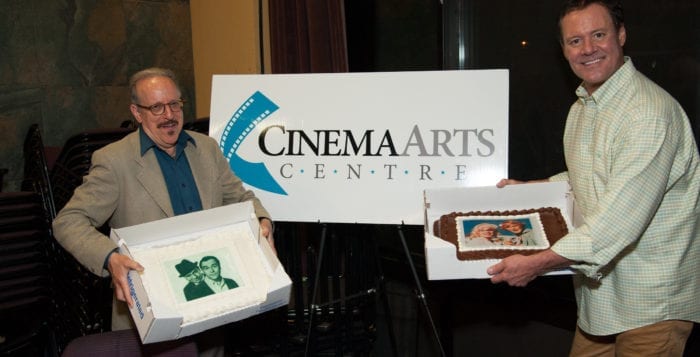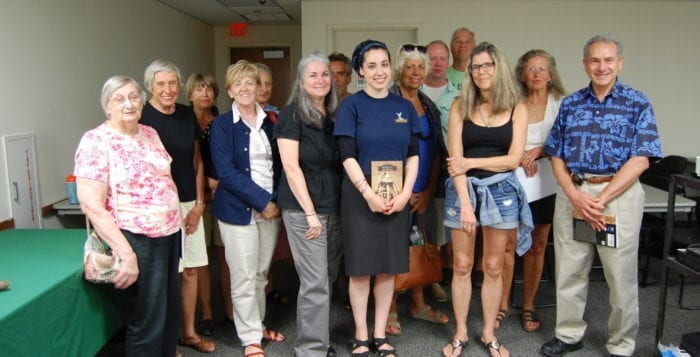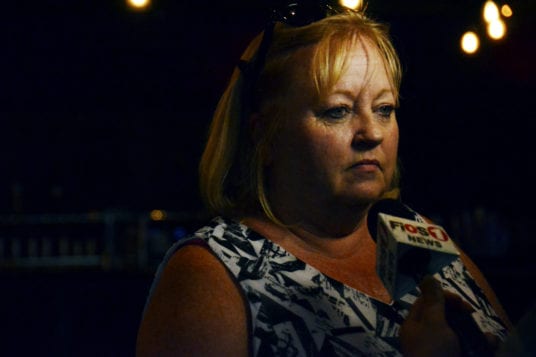By Victoria Espinoza
Long Island has joined the ranks of only a select few regions of the United States in bringing an “effective end” to veteran homelessness.
The community has a “systematic response in place that ensures homelessness is prevented whenever possible, or if it can’t be prevented, it is a rare, brief and nonrecurring experience,” according to the United States Interagency Council on Homelessness.
North Shore legislators and organizations have worked together for the past several years to get an estimate on the number of homeless veterans living on Long Island and to make sure they are aware of all resources available to them.
In June 2010, U.S. President Barack Obama (D) signed the Opening Doors bill, which approved a comprehensive federal 10-year plan to end and prevent homelessness. The bill was the first of its kind in the United States.
“I thank God everyday there are people that have the compassion to fight for us.” — Todd Shaw
The strategy focuses on many different subgroups of the homeless population, and the first to be tackled was homeless veterans. The goal was to see an end to veteran homelessness by 2015 in accordance with the federal plan, and that is what Suffolk and Nassau counties have achieved.
In 2014, the Mayors Challenge to End Veterans Homelessness was announced, which helped unite local leaders with organizations within their communities to help tackle the problem together. It also helped give specific parameters of what a community must do to achieve an “effective end” rating from the Interagency Council on Homelessness.
Politicians worked with North Shore organizations including the Long Island Coalition for the Homeless, the United Veterans Beacon House and more.
Mike Giuffrida, associate director of the Long Island Coalition for the Homeless said the coalition has been working with other groups to whittle down a master list with names of 748 homeless Long Island veterans in the hopes of reaching zero by the 2015 deadline set by Opening Doors.
Once they had the list, the coalition and other nonprofits started informing homeless veterans of the resources at their disposal. Giuffrida said members of the nonprofit and veterans themselves help with letting other vets know their options.
“We always have veterans doing veteran outreach, some of whom were also formerly homeless,” Giuffrida said in a phone interview.

Todd Shaw is one of those volunteers. He served in the Army for 13 years, from 1975 through 1988, and found himself without a residence for about five months in 2014. At the time he was being treated as an inpatient at the Northport VA Medical Center, where he learned about Liberty Village, a 60-unit apartment complex in Amityville that provides housing exclusively for veterans.
“Timing is everything,” Shaw said in a phone interview of the circumstances that led to him applying and later being accepted into Liberty House. “It’s a very liberating thing to have a safe haven, a place to come home to at the end of the day.”
The 61-year-old veteran said he enjoys volunteering with the Long Island Coalition for the Homeless because he is able to give back.
“I come from a strong patriotic family,” he said. Both of his parents served in the armed forces. “I feel good by doing good. I thank God everyday there are people that have the compassion to fight for us.”
Frank Amalfitano, president and CEO of United Veterans Beacon House, another organization that specializes in homeless veteran outreach, said members of the nonprofit go into communities, visiting abandoned buildings, train stations, woods and fast-food restaurants to find veterans and offer them shelter and continuing care options.
Amalfitano said offering homeless veterans different options is crucial, because “you don’t want to set people up to fail. Some veterans come in and they have an income but emotional problems, or they don’t manage their money well.”
Because each case is different there are permanent, temporary and emergency housing options, according to Amalfitano. He also said some homeless veterans are not interested in any of the services, however they are continually revisited in case they change their minds.
“In some cases there may be a lack of trust, they feel safer out in the woods than they do in a shelter,” he said. “But at least now they know in case they get sick or change their minds.”

The president said United Veterans Beacon House can now accommodate any veteran within 24 hours — in some cases even quicker than that.
Giuffrida said by December 2015, the goal was to have housed 748 veterans. By the deadline 799 homeless veterans were given shelter and services. “Just last month we housed our 1,000th veteran,” he said.
He clarified that declaring an “effective end” does not mean there are zero homeless veterans on Long Island.
“This means there is a system in place [where] we can move any veteran that becomes homeless into a house in 90 days or less,” he said.
But he is excited with the progress that has been made. “We want the veterans in our communities to know we have a relentless dedication to them,” he said.
Suffolk County Executive Steve Bellone (D), a veteran himself, was one of many North Shore leaders that stepped up to the plate to help support local agencies.
“Our veterans served with dignity abroad, when they come home they should, in turn, be provided the dignity of adequate shelter for themselves and their families,” Bellone said in a statement.
Suffolk County Legislator Steve Stern (D-Dix Hills) has worked on legislation to help end veteran homelessness, including the Housing Our Homeless Heroes Act, which allows for zombie homes, or tax-defaulted properties in Suffolk County to be redistributed to veterans.
He said he’s proud of this achievement: “It sends the important message that we will always make sure our veterans have the support they need.”
Stern also commended the efforts of the various local organizations.
“This is an extraordinary accomplishment, one that reflects the dedication and tireless work of agencies … that have increased availability of housing for those who have sacrificed so much to serve our great nation and their families,” he said.
Only two states and 27 other communities in the country have reached this status.








 Getting together
Getting together  Piece by piece
Piece by piece 





















